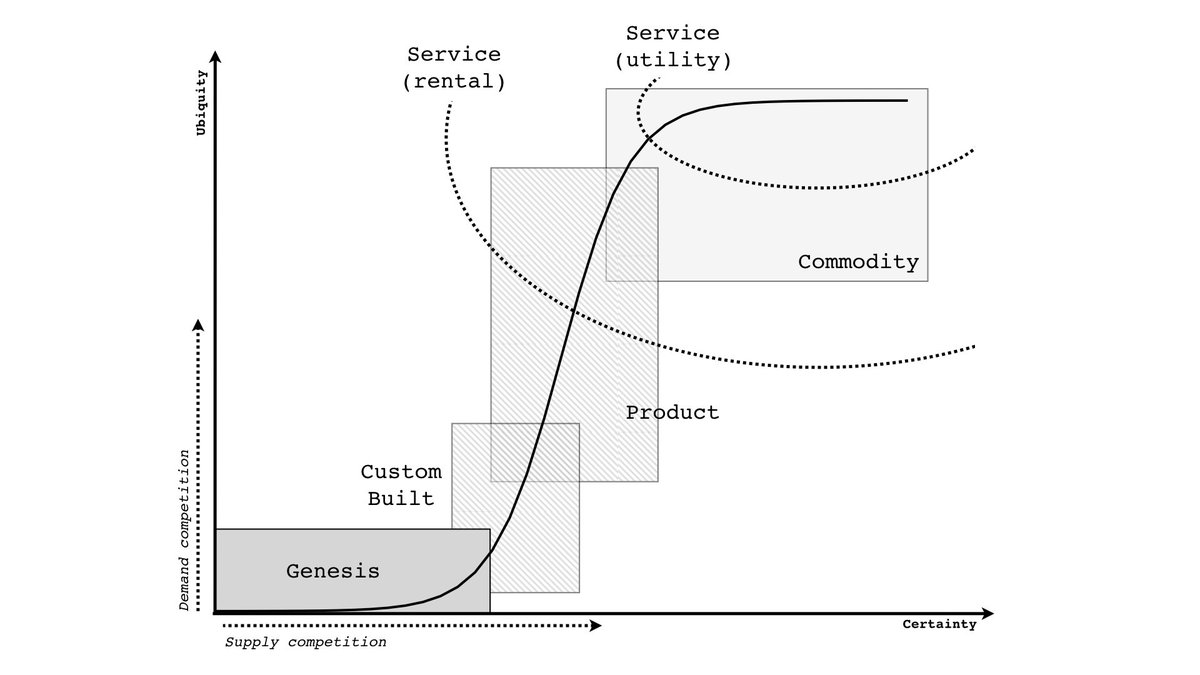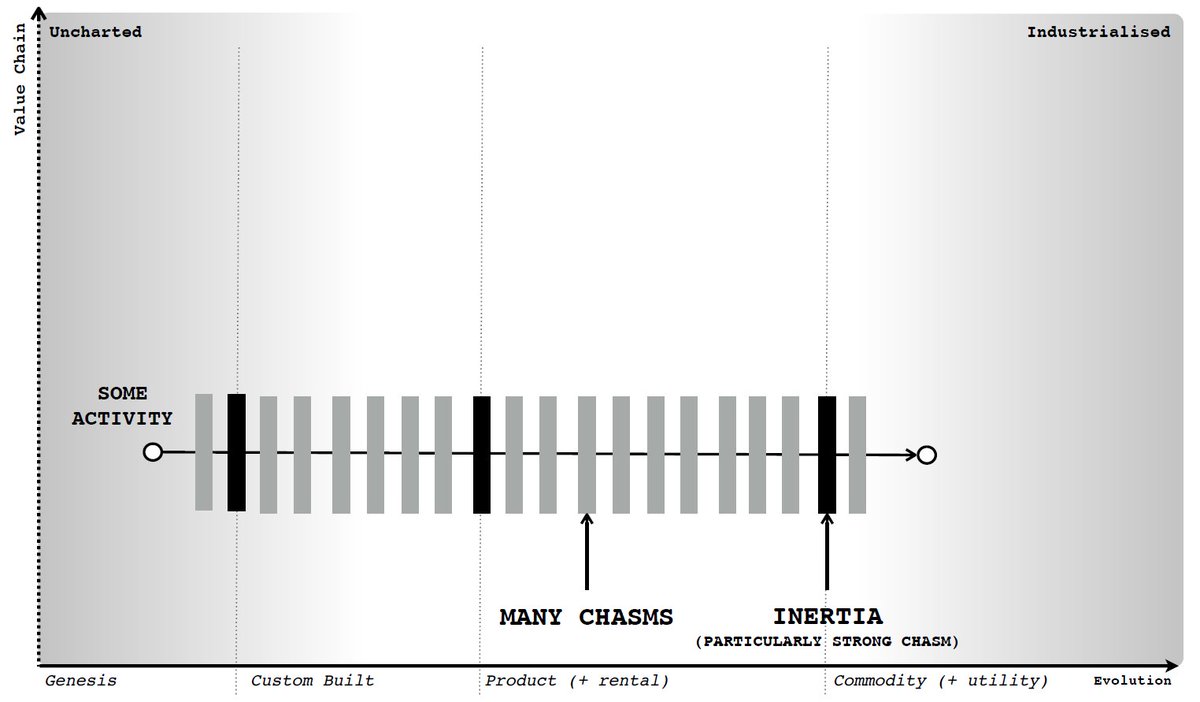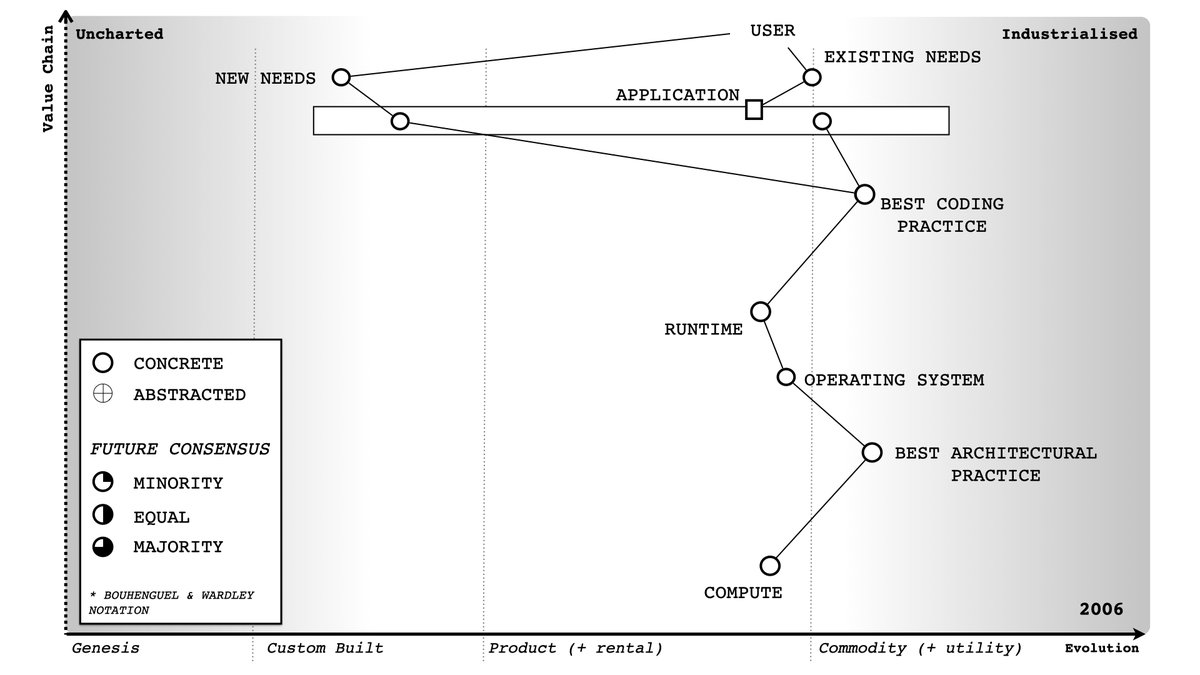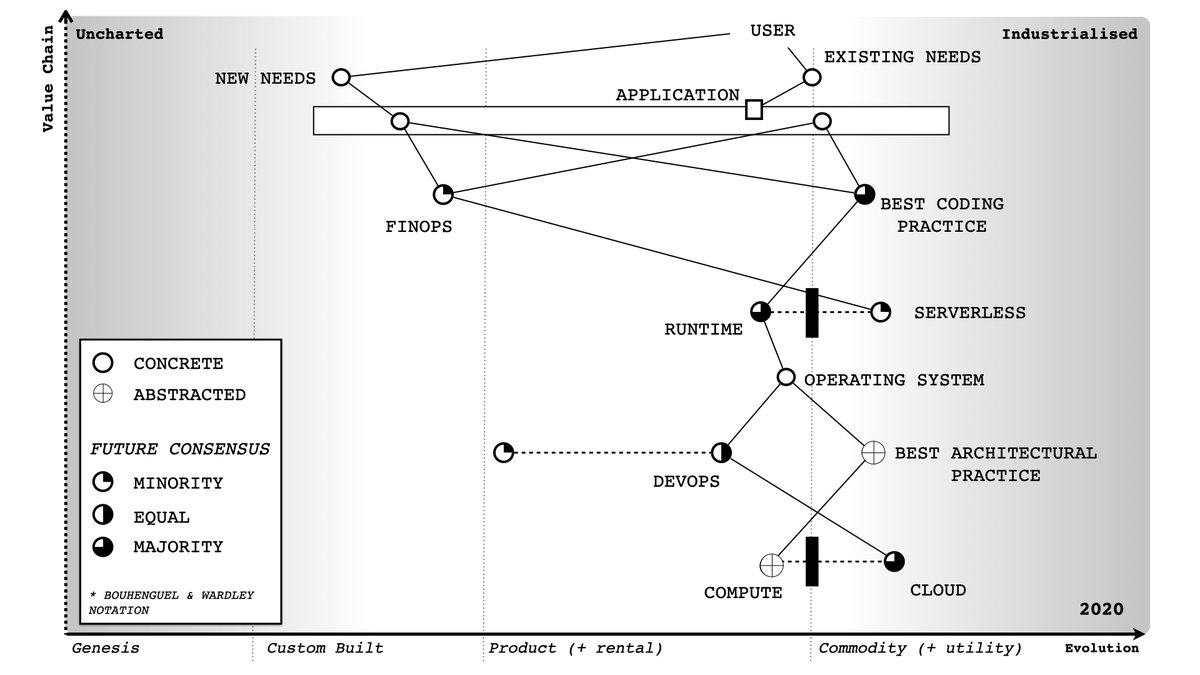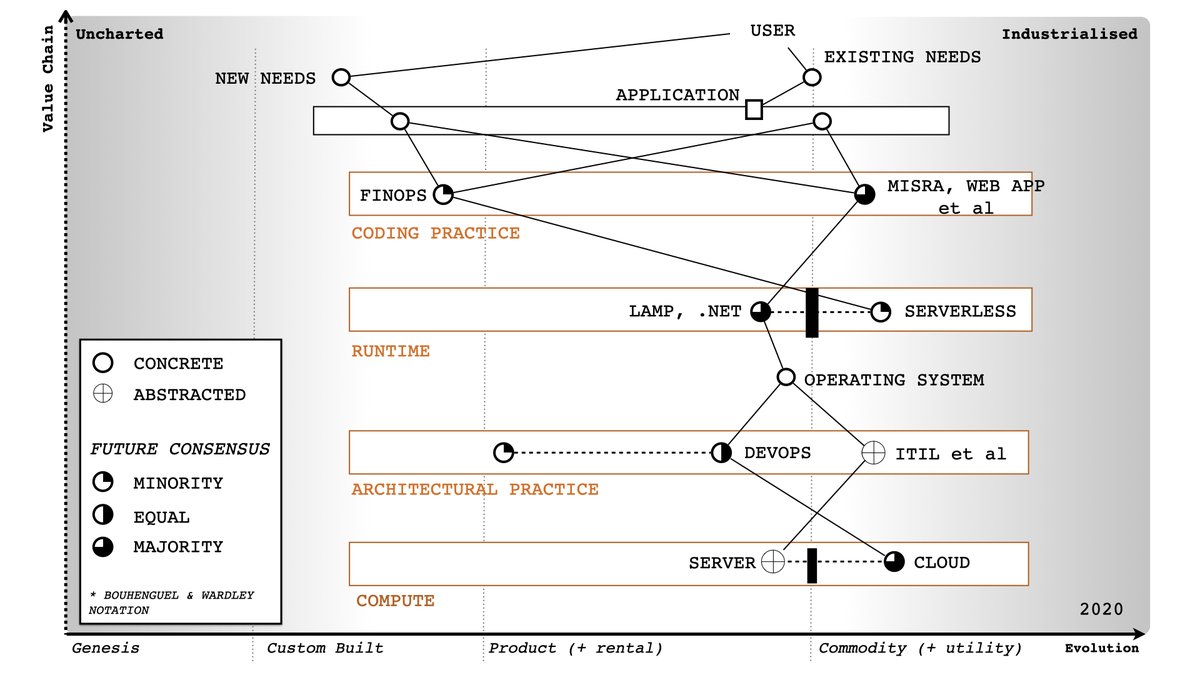X : Have you seen this cloud survey ...
Me : Hmmm. No separation of populations. Not interested.
X : Sorry?
Me : Ok, take a map ...
Me : Hmmm. No separation of populations. Not interested.
X : Sorry?
Me : Ok, take a map ...
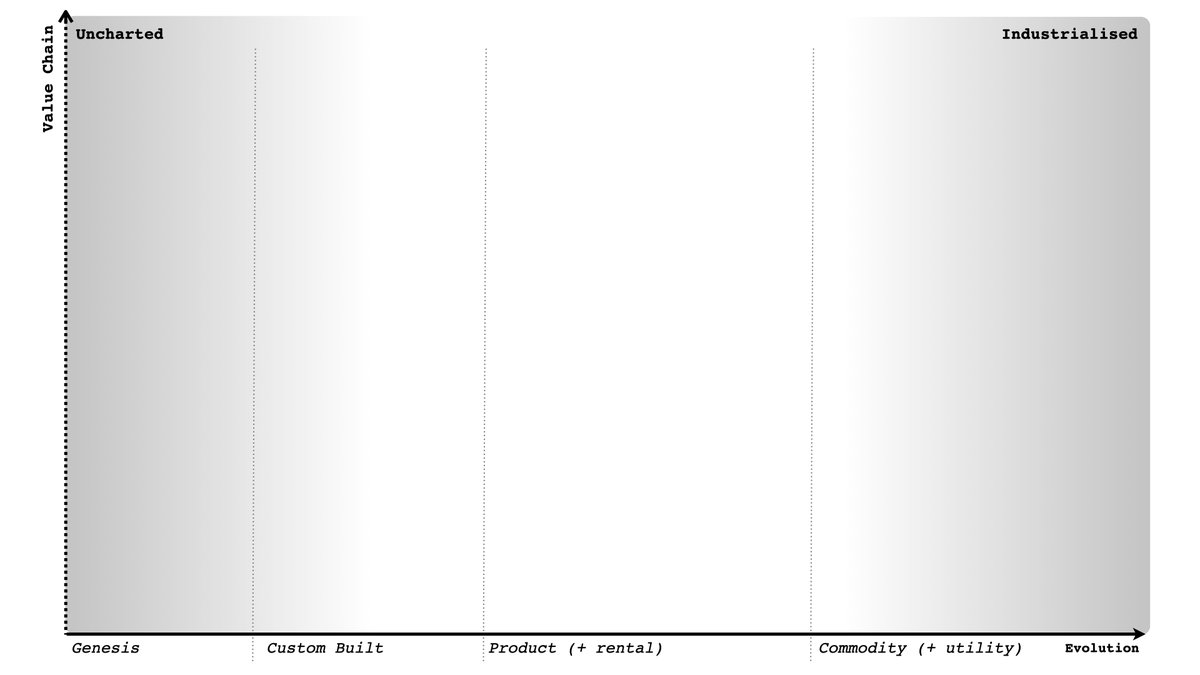
... that curve is made of multiple diffusion curves of ever improving (fit) instances of a thing, each with its own chasm ... 
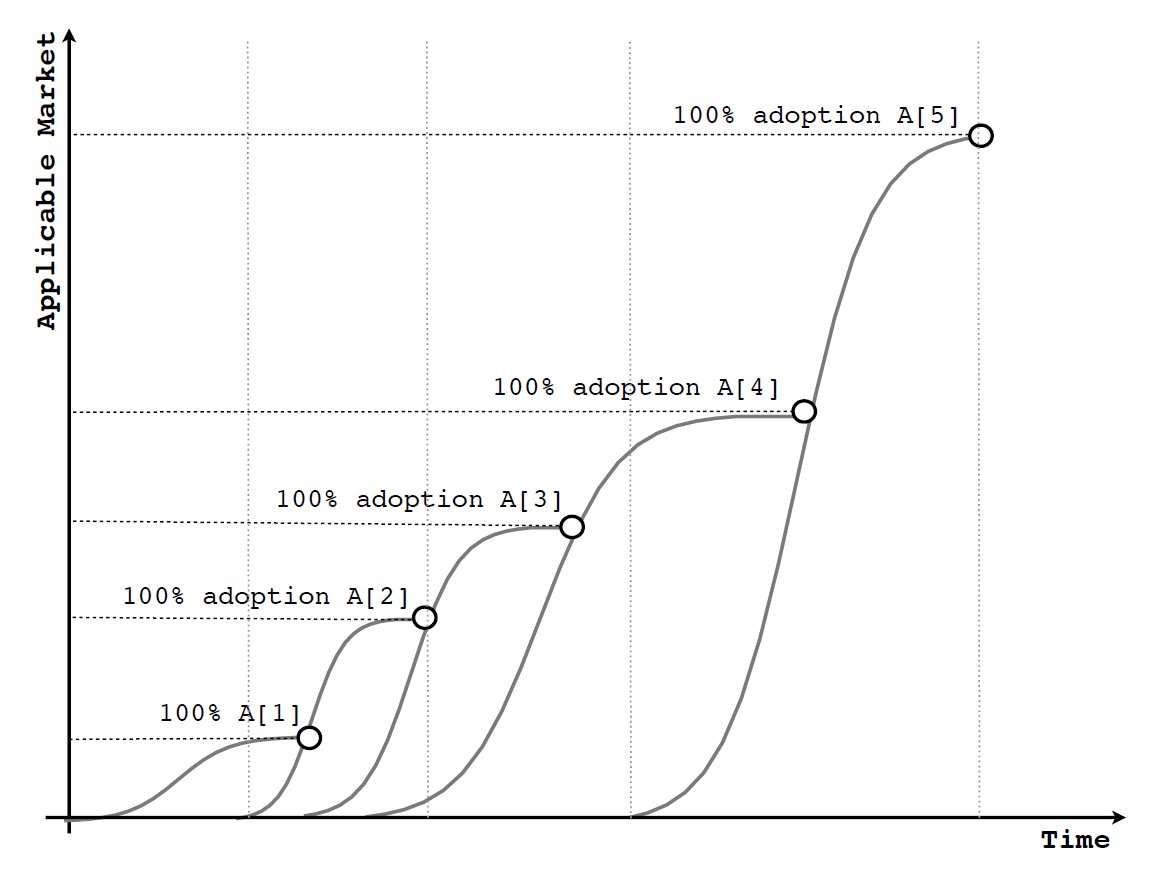
... take a moment in time, the majority maybe on one diffusion curve (e.g. the latest instance of compute as a product i.e. servers) and the minority on another (i.e. compute as a utility i.e. cloud) - both share a common meaning of compute ... 
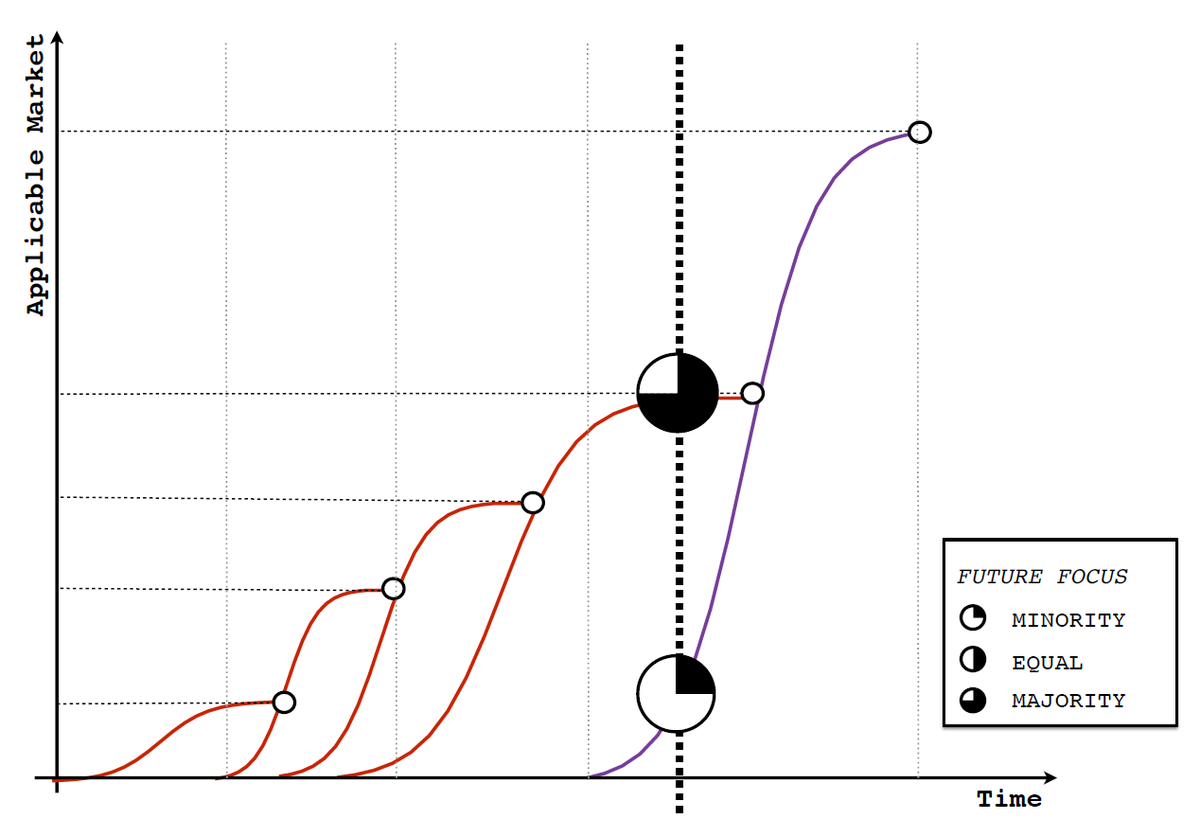
... roll it forward by applying common economic (climatic) patterns of evolution, componentisation and co-evolution ... then it was easy to see what actually then happened ... 
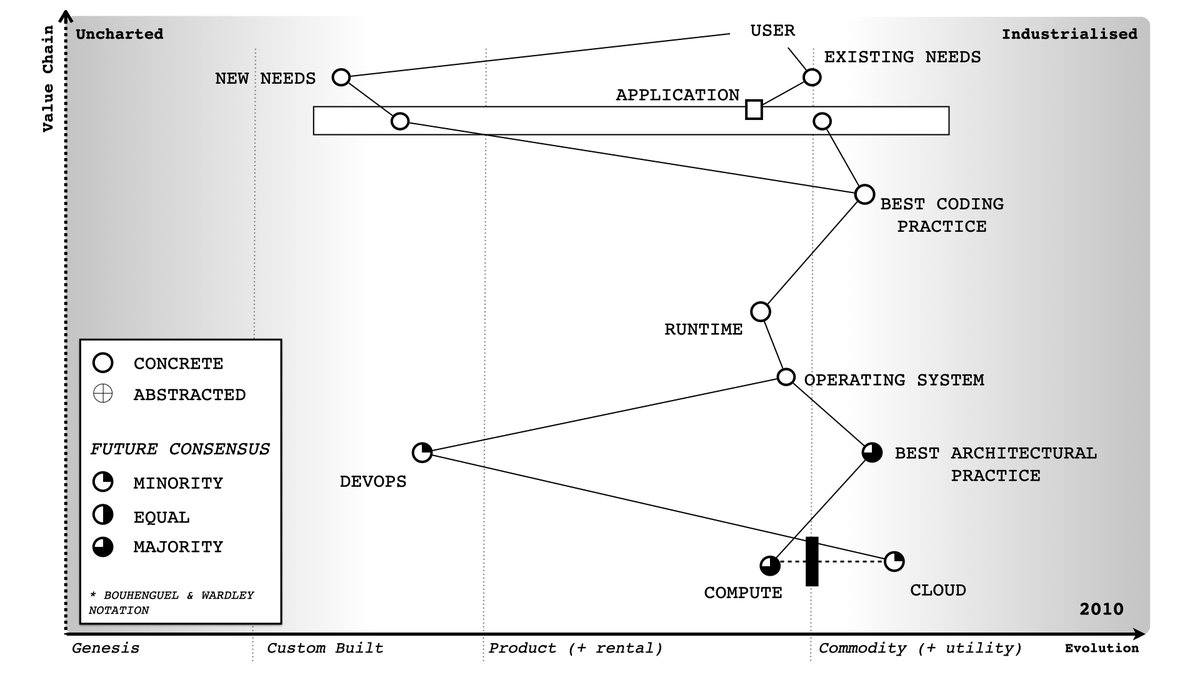
.. the majority were focused on best architectural practice for compute as a product, the minority were focused on compute as a utility with DevOps ...
... roll it forward to 2015 then the same thing occurs around serverless with the majority focused around the runtime as a product (LAMP etc). FinOps wasn't a name then, just new practices were appearing ... 
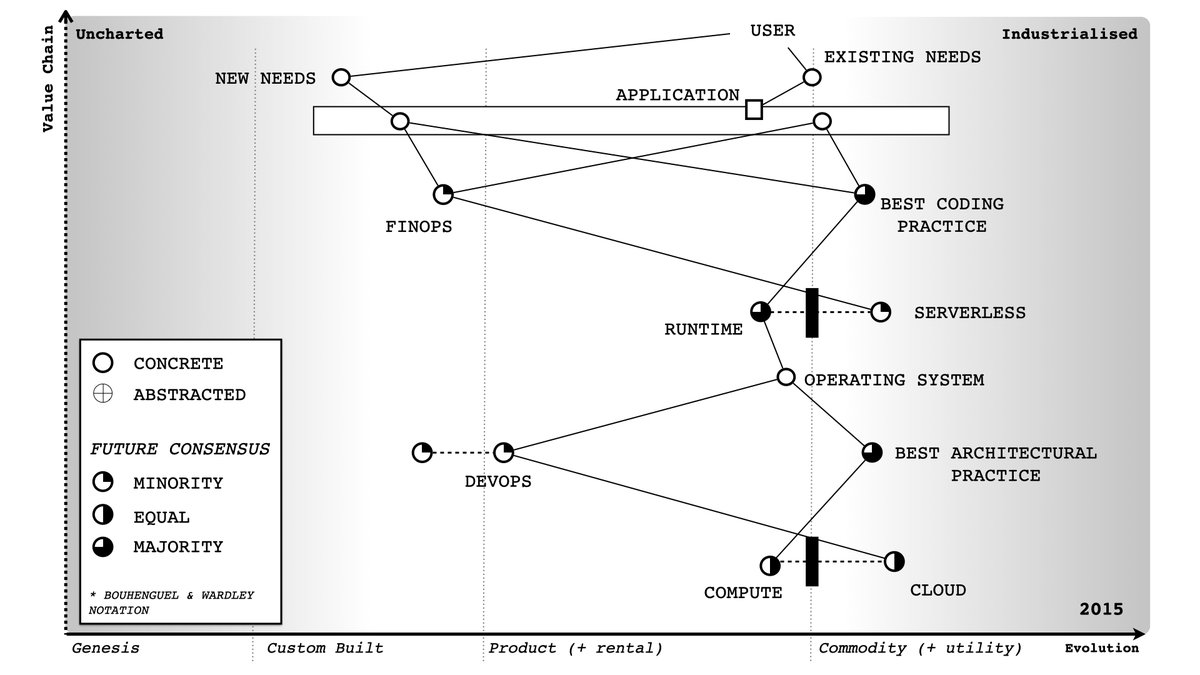
... until say 2030 where all the lower order components start "disappearing" as they are abstracted away. 
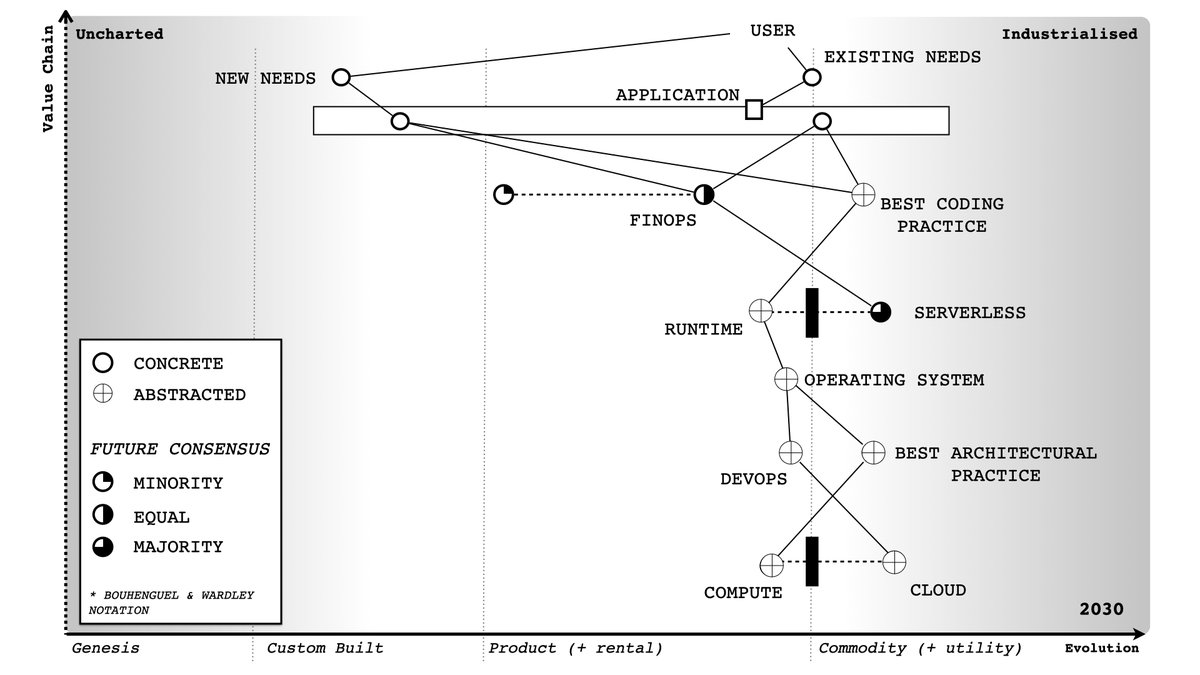
None of this is retrospective, this was all predicted with maps ... but that's not the point ... the point is where you should invest ... 

... but look closely at the map. The majority today will tell you to invest in exactly the wrong places ... go do DevOps, go do IaaS ... great for 2010, terrible idea for 2021. You should be focused on serverless. 

Me : So, when it comes to your cloud survey ... Simpson's paradox. If if doesn't seperate out the populations (and there are distinct populations in the DevOps world, it's not homogenous) then you're probably aggregating to exactly the wrong advice.
Me : There are some companies out there that are on the ball i.e. take a look at the work that @Liberty_IT is doing. But all these go IaaS, do DevOps, build hybrid claims from "aggregated" surveys are selling you the wrong path.
Remember the labels on the axis at the bottom are just labels for the different stages of evolution (I to IV). We use different labels for different forms of capital ... 

Hence DevOps is currently good (heading towards best) architectural practice for compute as a utility nee cloud. There are, and remain, different best architectural practices for compute as a product nee servers. 
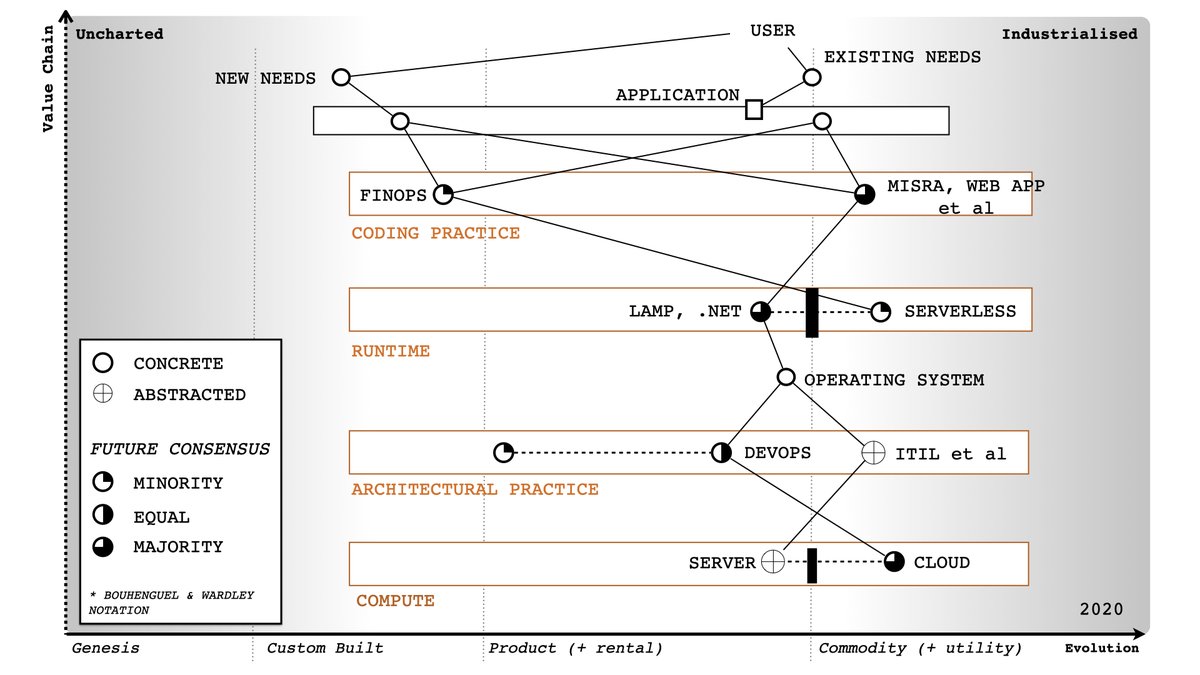
So, for example we have a whole bunch of emerging coding practices nee FinOps being built on the runtime as a utility nee serverless. These are different from coding practices (best) for the runtime as product ... take security as an example.
Anyway, this is all old hat ... as I said, this is not a retrospective, this was all said before and during the relevant events. The point I want to emphasise is if you take the aggregated majority view with these distinct populations then you will end up on the wrong path.
• • •
Missing some Tweet in this thread? You can try to
force a refresh

